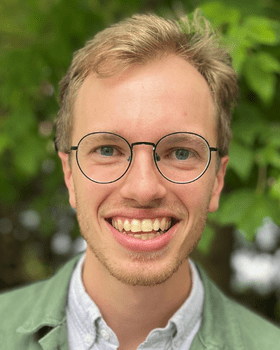A conversation on building Maryland’s offshore wind workforce
In the fall of 2022, the U.S. Department of Commerce Awarded $22.9 million to the Maryland Department of Labor from its Good Jobs Challenge grant program. The money is intended to catalyze the development of Maryland’s emerging offshore wind workforce and industry, including the existing Maryland Works for Wind (MWW) program.
To learn more about the state of offshore wind workforce development in Maryland, CESA Research Associate Sam Schacht interviewed Erin Roth, Deputy Assistant Secretary of the Division of Workforce Development and Adult Learning at the Maryland Department of Labor.
Sam Schacht: How has Maryland’s workforce development strategy and workforce training strategy evolved over the years?
Erin Roth: We’ve moved from learning about the industry, including visiting other countries to understand best practices, to talking to offshore wind employers and understanding their needs. In workforce development, we always say that we have two sets of customers: businesses and job seekers. We can’t do a good job of serving one without understanding the other’s needs. With that in mind, when developing training programs, we want to ensure that someone will end up in a really good job and that they’re prepared for what the industry is looking for in their workforce. To ensure that happens, we task employers with developing a curriculum to ensure training is responsive to their needs. Now that we do have offshore wind businesses and are gearing up for the years ahead — 2025 and 2026 — we’re working to understand what those needs will be for both sets of customers.
Sam: How was the Maryland Works for Wind Program conceived, and what are your plans for the grant going forward?
Erin: We’re bringing together our existing assets – from American Job Centers to unions to community colleges to nonprofits – to create an ecosystem and a workforce for employers with an equity approach in three sub-sectors within offshore wind: manufacturing, transportation and logistics, and the skilled trades. Through conversations with our employer partners — US Wind and Ørsted — we understood that they’re going to need thousands of mid- and high-skill workers when manufacturing and construction work starts. This means we need to be training people right now for entry-level positions, even though these jobs are still a few years away. In addition, we need to address other barriers that might keep somebody from entering training, a career, or keeping a job. This is how we will build pathways to work, wages, and wealth – a hallmark of Governor Moore’s administration. In turn, Maryland will be where businesses want to set up shop for offshore wind.
We’re taking some of our high-performing existing grantees in parts of the state where this industry will be coming, including non-profit organizations and community colleges. These organizations are exceptional at providing in-demand, industry-led training and removing barriers for the individuals they serve.
We’re also leveraging partnerships with registered apprenticeship sponsors connected to the employers through project labor agreements to build their capacity to meet the needs of customers, businesses, and job seekers. The grant will help to make this Maryland’s decade by creating thousands of new jobs, boosting the local economy, and helping us move forward to a cleaner future.
Sam: Equity has been a really important part of Maryland’s wind workforce strategy. How is the Maryland Department of Labor incorporating equity into its work on offshore wind?
Erin: We feel that it is central to our mission to help individuals access good-paying careers, so we don’t leave anyone behind. In the words of Governor Moore, “you don’t accidentally get to equitable.” We are working hard to be intentional, authentic, and serious about equity to leave no one behind. We brought in experienced community-based organizations who are great at getting out into the communities they serve, identifying individuals to participate in training, helping to remove those barriers that get in the way, and placing folks into great paying careers.
But that simply isn’t enough. Communities, especially underserved communities historically marginalized or burned by big systems making empty promises, have reason to ask, “Why will this be different?” It is important to reach out to organizations like the NAACP, historically black colleges and universities, neighborhood associations, churches, etc., to ensure that people know there will be good opportunities. The government must be honest that these equity projects haven’t always worked in the best interests of the people they’re supposed to serve, so it’s important to recognize that and be upfront that the government has not always gotten it right. Still, we are committed to getting it right at this moment.
This blog post was originally published in Windpower Engineering & Development.
Published On
June 14, 2023

